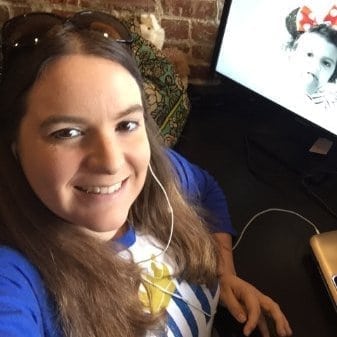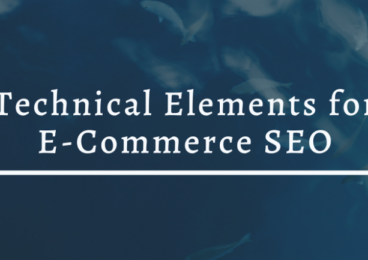 Reading Time: 6 minutes
Reading Time: 6 minutesLeveraging pay-per-click advertising could be the tipping point of your business success. This isn’t an overstatement.
For one, Google owns over 92 percent of the search engine market and 73 percent of the paid search market share — so you get to leverage this huge audience base when your brand’s ads show up in SERP results for relevant queries. Secondly, the platform generates about 5.6 billion searches for relevant keywords daily. Capitalizing on this visibility with targeted ads lets you reach customers who are in market for your product now — meaning there’s a likelihood of higher conversion rates, more leads, and larger sales volumes.
Google ads (commonly known as PPC search advertising) also works seamlessly in conjunction with organic channels such as SEO to get you in front of the audience for keywords & locations where your SEO efforts are yet to show results. You can use learnings from your PPC campaigns (conversion rates, CTRs, etc.) to help guide your SEO keyword strategy.
That being said, however Google Ads campaigns may seem overwhelming to anyone just starting out. If this is your current position, don’t worry. This guide will take you through the ins and outs of Google Ads and how you can use the service to achieve your marketing goals in 2023.
Google Ads Platform at a Glance
This is a paid ad platform in the pay-per-click (PPC) category where advertisers pay per click on an advertisement. It’s a practical approach to driving qualified traffic and good-fit clients to your company as it targets prospects searching for similar products and services to yours. The platform essentially boosts your site traffic and increases your opportunity for conversion events such as phone calls, leads, sales, in-store visits, and more. .
With Google Ads, you can craft and distribute well-timed mobile, video and desktop ads to your target audience. This will enable your ad to appear on the search engine result page once a prospect befitting your buyer persona is looking for related services or products via Google Maps or Search.
This arrangement lets you reach your ideal customer at the most opportune moment to view your ad. Over time, you’ll be able to monitor and tweak your campaign to gain more visibility so your company can hit your PPC goals.
Your resources or the size of your business are not a factor since you can tailor your campaign to align with your budget. The platform offers several tools to keep you within your monthly ad spend, pause your expenditure, or even stop your ad spending whenever you want.
While you can manage your Display and Search ad campaigns via the platform, “Google Ads” generally encapsulates the Search Network. The platform runs on an auction system where bids aren’t the only cost determinant but also ad relevance and quality score.
Why Use Google Search Ads & Shopping Ads?
Generally, PPC advertising campaigns offer numerous immense benefits to businesses. However, companies that leverage Google Ads enjoy additional advantages such as:
- Quick results – Any business needs a robust SEO strategy to boost brand visibility, but content usually takes time to rank. Google Ads, on the other hand, begin appealing once you set the campaign live.
- Insights and data – Your campaign data will offer valuable customer insights and help you maximize your budget.
- Full funnel-friendly – Between the platform’s targeting capabilities and Display, Search, YouTube, and Shopping ads, the platform’s Performance Max can come through for you at every level of your sales funnel.
- Audience-targeting features – The platform offers additional CTV buying options to help you measure and reach the right audiences.
- Simplified testing and measurement – To improve something, you need to measure it — and Google ads simplifies this process with its integration with Google Analytics via Google Tag Manager. You can seamlessly measure everything from conversions to traffic brought to your website by ads through Google Analytics. You can also leverage Google Experiments that allows for A/B testing directly in the platform (bid strategies, dayparting, etc.)
- Potentially high returns – Google Ads is among the PPC marketing channels with the most tremendous ROI potential. It is because you can target your ads to only show for “transactional” keywords — meaning whoever visits your landing page will be a qualified in-market consumer. You can also take advantage of Google’s target CPA bidding to allow for increased ROI.
While enjoying all these benefits is possible, you can only get the most from the ad platform by doing it right. Fortunately, the next section will guide you.
Tips to Achieving Your Goals Using Google Ads
So how do you get your Google Ads strategy right? The following best practices can aid your PPC campaign goals:
Choose the Best Keywords for Your Google Ads Campaign and Personalize Users’ Journey
It’s a no-brainer. If keywords guide successful AdWords campaigns, leveraging the most appropriate ones goes without saying. But unfortunately, it’s never that simple.
The keywords you choose to advertise and those you decide to avoid could make or break your AdWords ROI.
For instance, advertising agencies offering PPC account management services wouldn’t bid on key phrases on web development. Thus, it makes sense to find related terms using the platform’s Keyword Planner.
Also, always remember that users browse the web using their natural language or the same way they talk.
- Cheap air tickets
- Best password manager
- What is the definition of…?
This brings us to keyword matching. In essence, these comprise the quotation marks and brackets you can use on the key phrases to target your potential customers better. Your options include:
- Broad – This is the most comprehensive net that marketers like you can cast. It matches user searches with any words that include the target keyword (including synonyms) without considering their order.
- Phrase match – The modifier displays your ad only when a searcher uses the specified phrase. The searcher’s query must comprise all the words you highlighted in their exact input order but allow for phrases before or after the query.
- Exact match – Like the phrase match, this modifier enables your ads to show in your precise search query. However, Google made it more flexible to display your ad for plural versions, misspellings, or specified interchangeable keywords.
- Depending on what you want to achieve, these are the most effective keyword-matching options available.
Find the Negative Keywords
It’s essential to prioritize your Google Ads campaign’s integrity, and one of the most effective tools at your disposal is the group of negative keywords.
The platform lets you highlight keywords that don’t match your service or product. When you tell Google what your service or app or product is not, your ads won’t display on any keyword search that doesn’t align with your target customers. Pretty convenient.
For instance, let’s assume you’re a real estate management agency dealing with multiple off-campus apartment complexes for college students. In this case, you’re dealing with housing facilities for scholars, not traditional family units.
The best way to filter out the undesired traffic and retain the qualified ones, excluding search terms like “family,” “children,” or “cheap.” This way, you’ll negate traffic from searchers that don’t match your target demographic.
Telling the search engine what your service or product is not can be as crucial as telling it what you really are. You can include negative keywords at the account, campaign and ad group levels. This will help eliminate wastefully, irreverent searches.
Use Google Optimize to Improve Your Performance
Not all users are alike, so your site must address their tastes and preferences. With Google Optimize, you can run site experiments to determine your respective users’ optimal landing page experience.
Running tests on Optimize can help you try new site layouts, designs, apps and content with a fraction of your audience. You don’t need to rely on opinions and instinct to find the best design for your page or site. Instead, you can test the different designs with real-world users and get simple and understandable results.
Optimize measures and track your experiments using Analytics and uses conversions as objectives. It also allows you to serve these tests to specific user groups you’ve highlighted as your audiences.
Design an Optimal Landing Page
Despite their crucial role, this is still among the most overlooked elements of PPC advertising. Most marketers find themselves lost in the PPC platforms testing ad copy, tweaking bids, and dedicating their resources to the platform. But once a user clicks on a paid ad, something crucial takes place: they visit your site!
Generally, Google Ads’ primary revenue objective is making a sale, but effective ads must be relevant. Users should get to your landing page with all the necessary information when they open an ad. But this is just the first part of the process.
The next stage involves converting the prospect into a buyer, lead or paying client. That’s why optimizing this section is always important by aligning your brand message with the landing page message.
By staying consistent with your ad copy, keywords, and landing pages, you’ll improve your conversion and click-through rates and lower your CPC. The general idea is to earn greater ROI while maximizing your ad spend. Even better, Google’s cookie-less update is set to enhance user experience.
Since you’re confident that your potential customers are looking for your offer, presenting this message on your landing page and including a CTA can significantly increase conversions.
This basic rule can guide you through crafting compelling ads that communicate the value of your product or services and drive conversions.
Highlight Your Ad’s Most Powerful Words/Phrases
Lastly, you must determine your most compelling words and phrases that can boost the chances of conversion. Generally, your campaign should include specific words like “last minute” or “offer.” Such terms can pull a stronger motivation to buy.
Moreover, words like “functionality,” “ease-of-use,” and “efficiency” can go a long way in influencing the buying decision of your potential customers online. So use them alongside other attention-grabbing phrases.
Work with a Reputable PPC Expert
While the above guidelines can help you get the most out of your PPC campaign, getting it right isn’t as cut-and-dried, especially if you also have to handle other aspects of your business. In this case, hiring a reputable PPC expert can be the best decision. Fortunately, you’re on the right site.
Our reliable RFP template can be an excellent starting point for a successful PPC advertising campaign. So sign up today and download it for free.
If you would rather not waste time learning the ins & outs — and instead rely on a professional to maximize ROI on your campaigns — our PPC managers Vizion can help. Contact us today.
At Vizion Interactive, we have the expertise, experience, and enthusiasm to get results and keep clients happy! Learn more about how our status as a Google Partner, along with our PPC Management, Google Shopping Ads, Social Media Advertising, Amazon Advertising, and other Paid Media services can increase sales and boost your ROI. But don’t just take our word for it, check out what our clients have to say, along with our case studies.




